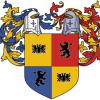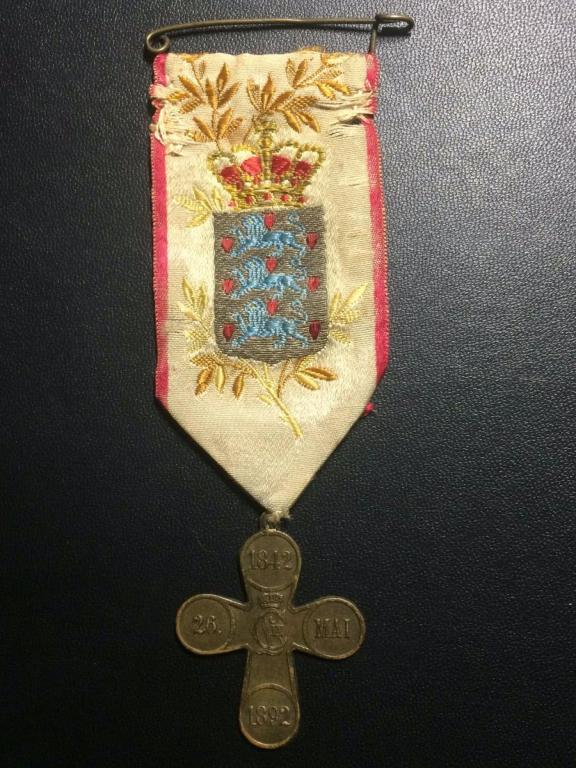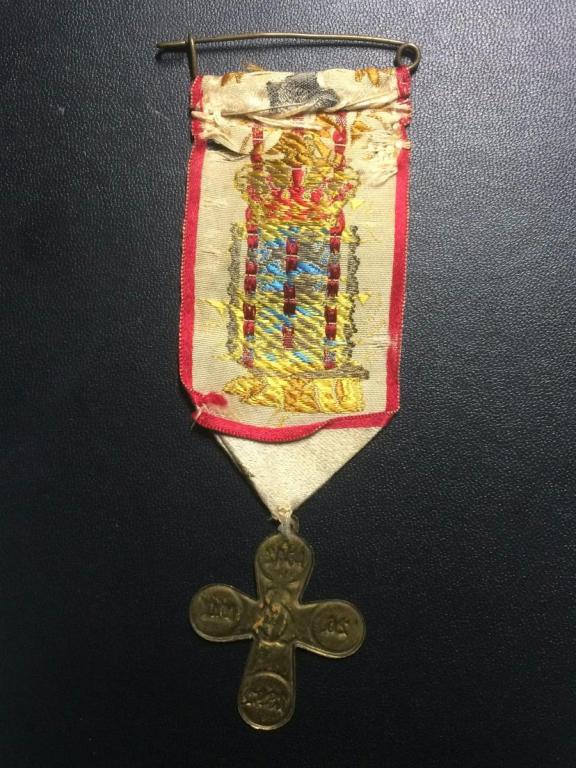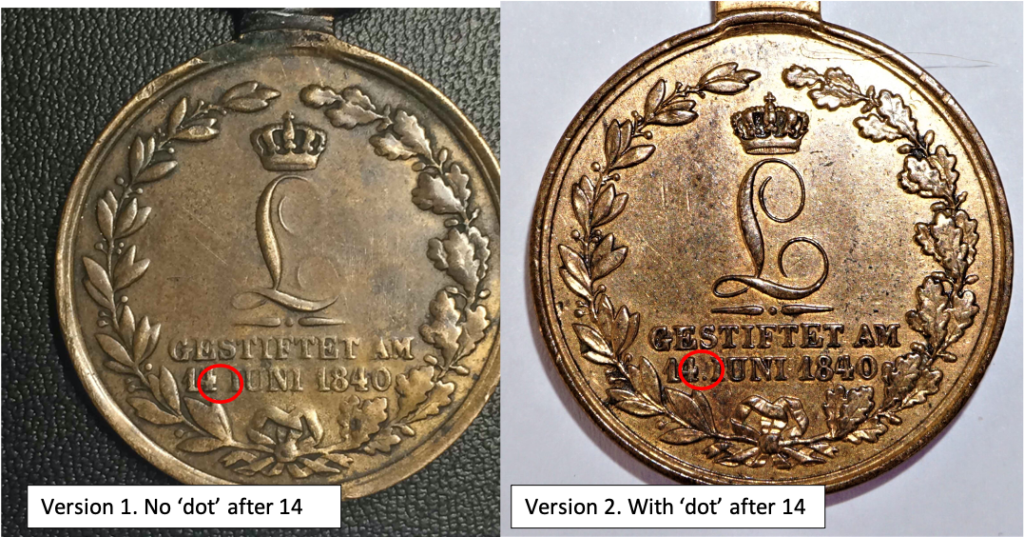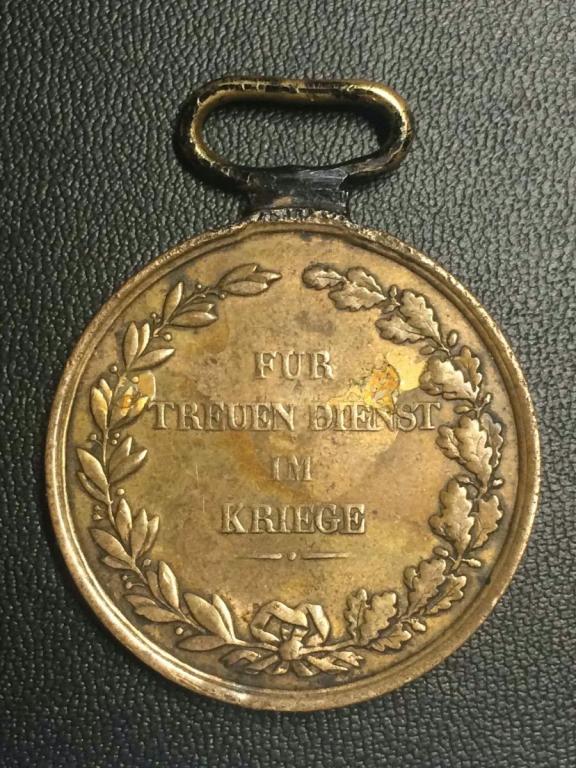
TJLA
Standard Membership-
Posts
55 -
Joined
-
Last visited
Profile Information
-
Location
U.S. and of the A...
Recent Profile Visitors
1,357 profile views
TJLA's Achievements
-
The best way to store paper documents
TJLA replied to azyeoman's topic in Preservation & Restoration of Military Artifacts
I spent this past year purchasing storage systems used by museums for archival purposes to include paper, documents, maps etc after finding that some documents were turning yellow from the boxes they were stored in. (Cardboard boxes emit gases which is why everything from photos, clothes, books and paper turns yellow). Highly recommend starting at: https://www.gaylord.com/c/Preservation You will want to read up on what buffered and unbuffered storage materials and how you want to store it. Learn about P.A.T. and other specs when figuring out what kinds of archival materials you need: https://www.gaylord.com/resources/gaylord-archival-specifications There are other companies that offer similar materials at lower cost, I'm not endorsing them specifically but it helps to understand the world of how to properly store materials. These are the systems that the US government, state governments, libraries and museums use. Don't guess or go to other sources to figure it out, go to the main source where they buy. If you're in the US, call these folks and tell them what you're trying to do, they are helpful and will guide you. My eyes glazed over a bit at all the options when I first started, but now that I understand, I now have individual storage systems for everything I collect. It's made a world of difference in peace of mind knowing I've slowed down deterioration and that it will be safe for decades. -
If you implement a paid membership system it will kill traffic and new people to the forum will not be interested enough to pay for something they are unfamiliar with. Eventually the site will die. There's simply not enough traffic to justify a paid membership, it will turn this site to a clique club with few members after a couple years. Anyone finding GMIC by accident (which is everyone) while researching medals will never pay to join. Had I come to GMIC in the past and it was paid service, why would I pay for a medal forum? It kills the whole purpose of sharing this info with the world. We need more people coming here and not less. I so strongly advise against a paid membership, as only a select group of the old guard will pay but new blood will be hard to convince to pay up. For as infrequently as I come here, I doubt I would pay. Despite this being such a wealth of information. For the 2-3 times a year when I check to see if anyone has even responded to my posts, as at times it takes years to even get a response on certain topics. I think with a 'marketing' campaign you can easily cover your costs without a membership. I don't see anything in my inbox asking for funds, or a banner at the top stating you need money. Post it and make it super easy for everyone to see you need funds to cover this. In a car club I'm a part of, for a small donation they send you sticker and a t-shirt, it's gimmicky but that's how marketing works, and they do cover their costs. Make a yearly fund raising drive and make it super easy to donate, make your target goal known, send everyone in the system an email. But don't go to a paid membership, you want more people joining, not less. This isn't twitter lol.
-
I came here with the same question, and found a solution: Wayback Machine Web Archive. Site is still functional with pics and links. Thanks Glenn for all your past work, it's still helping people today. https://web.archive.org/web/20170102184831/http://www.austro-hungarian-army.co.uk/index.htm
-
There are more categories, the one I dread is a very clean medal with no engraving is then engraved in the old style script (not official), and then the medal is put through an artificial abuse and aging process. Some fakers go completely overboard and the knicks and marks look unrealistic, done in part to mask the if a medal is authentic. But the more sophisticated ones know how a veteran would wear medals and how they would knick up over time with authentic medals and then given a named privately script. WWII German named silverware or Polish officer cigarette cases have become a massive disaster of a minefield of forgeries and fakes as it's almost impossible to tell if something was engraved then vs now in that script. Thinking out loud for the scientists in the group, a test that can be done or developed to see when script was embedded on the medal. Like how sensitive medical equipment is made from steel from sunken ships from pre Atomic bomb tested world (doesn't have radioactive contaminants). I always wondered if there's a meturological way to see, like take a small scraping from deep inside a script and then analyze it... Does the heat/pressure do something to that spot that can be seen/observed etc?
-
Not to double post, but I think the original translation in English will bring in a wider audience as well. Thanks: Thank you for sharing all this information! It is extremely helpful. To add just a bit more to this: Hesse-Darmstadt was contributing troops to the Holy Roman Empire (HRE) as per agreement with all the German states, based on population size each state contributed an amount (I think Hesse_Darmstadt was 3,000 men to the HRE when the requested call came). They were present in many of the battles fought by the HRE starting in 1792 with the First and Second wars of coalition, as you can see in the battle rolls. Understanding this means the pool of available veterans for these medass from these wars greatly expands. Some more questions: 1. Nimmergut shows the second variation, but no explaination when or why it was issued. Is there any further information on this medal? This is really the key quesiton I've been trying to solve. 2. The engraved meal you have is beautiful. Do you know what period it is and if any medals were officially impressed by the state mint? 3. What is the significance of Juni 14 - why that particular day? I'm unable to find why they selected that day. 4. The image you posted IMG_0520 that mentions the medal will be awarded (but with no further details about it), where did this page come from? How I became interested in this medal: I purchased this medal for $10 recently (in a lot of others that were also priced very low) and had no idea it might be from the Napoleonic area, my favorite. I was planning on reselling the medal until Jesus Rey's book came out and it was in there... ...and down the rabbit hole we go! Hopefull google did a good job translating and I didn't insult someones pet goat, or sister...or both.
-
Vielen Dank, dass Sie all diese Informationen geteilt haben! Es ist äußerst hilfreich. Um dem noch etwas hinzuzufügen: Hessen-Darmstadt stellte gemäß Vereinbarung mit allen deutschen Bundesländern Truppen zum Heiligen Römischen Reich (HRE), je nach Bevölkerungszahl steuerte jedes Bundesland einen Betrag bei (ich glaube, Hessen_Darmstadt waren 3.000 Mann). HRE, als der gewünschte Anruf kam). Sie waren in vielen der von der HRE ausgetragenen Schlachten präsent, beginnend 1792 mit dem Ersten und Zweiten Koalitionskrieg, wie Sie in den Schlachtlisten sehen können. Das zu verstehen bedeutet, dass der Pool verfügbarer Veteranen für diese Medass aus diesen Kriegen stark erweitert wird. Einige weitere Fragen: 1. Nimmergut zeigt die zweite Variante, aber keine Erklärung, wann oder warum es ausgegeben wurde. Gibt es weitere Informationen zu dieser Medaille? Das ist wirklich die Schlüsselfrage, die ich zu lösen versucht habe. 2. Die gravierte Mahlzeit, die Sie haben, ist wunderschön. Wissen Sie, um welche Zeit es sich handelt und ob Medaillen offiziell von der staatlichen Münze geprägt wurden? 3. Welche Bedeutung hat der 14. Juni – warum gerade dieser Tag? Ich kann nicht herausfinden, warum sie diesen Tag ausgewählt haben. 4. Das von Ihnen gepostete Bild IMG_0520, das die Medaille erwähnt, wird verliehen (aber ohne weitere Details dazu), woher stammt diese Seite? Wie ich an dieser Medaille interessiert wurde: Ich habe diese Medaille kürzlich für 10 Dollar gekauft (in vielen anderen, die auch sehr günstig waren) und hatte keine Ahnung, dass sie aus dem napoleonischen Gebiet stammen könnte, mein Favorit. Ich hatte vor, die Medaille weiterzuverkaufen, bis das Buch von Jesus Rey herauskam und es darin war ... ...und ab ins Kaninchenloch! Hoffentlich hat Google beim Übersetzen gute Arbeit geleistet und ich habe nicht jemandes Haustierziege oder Schwester beleidigt ... oder beides.
-
Dank Google spreche ich jetzt Deutsch! Frage: Hat jemand Zugriff auf : Jörg Nimmergut, Deutsche Orden und Ehrenzeichen bis 1945, Bd.1 ? Laut Ehrenzeichen-Orden.de enthält dieses Buch Informationen zu den verschiedenen Streikversionen, die wir suchen. Hinweis: Jedes einzelne Bild, das ich von dieser Medaille als Punkt im Datum finden konnte. (Aber ich habe das einzige Exemplar, das dies nicht hat ..............?) Aussage: Das Zitat besagt, dass es für jeden Kampf und Dienst am Großherzogtum gilt. Aber das Problem ist, dass das Herzogtum vor 1806 nicht existierte. Vor 1806 waren sie Mitglied des Heiligen Römischen Reiches und mussten im Rahmen des Abkommens Truppen nach Österreich stellen. Alle anderen hessischen Soldaten wurden zu dieser Zeit an die Briten vermietet (die zu einem bestimmten Zeitpunkt allein in Nordamerika fast 30.000 waren) und kämpften überhaupt nicht für hessische Interessen, und in einem Fall fand ich hessische Truppen, die gegeneinander kämpften auf dem Schlachtfeld in Europa (vor 1806). Ich gehe also davon aus, dass vor 1806 nur sehr wenige Medaillen verliehen worden wären (wenn überhaupt?), weil hessische Truppen sehr selten mobilisiert wurden, und von den wenigen, die eingesetzt wurden, waren es nur wenige Tausend ... die meisten Veteranen 1840 tot sein würde, wie viele Dutzend Veteranen würden bis dahin übrig bleiben? Dasselbe gilt für Soldaten von 1806-1815. Ich bin nicht in der Lage, eine genaue Gesamtzahl zu finden, aber ich konnte nicht erklären, dass mehr als 12.000 Soldaten in den Kriegen eingesetzt wurden. Die Hälfte war 1815 tot, also wie viele blieben übrig, um 1840 eine Medaille auszustellen ... oder 1842? Therefore, Ich denke, die überwiegende Mehrheit dieser Medaille wurde 1867 ausgestellt. Ich freue mich darauf, jemanden mit diesen Themen und Gedanken zu beschäftigen.
-
Thanks again. The ribbon is definitely the unique and rare item, and the picture doesn't give it justice as it still has a very nice shine and reflective quality to it... I'm not sure what it's called but the silk still has that dazzle in the light. It's of thicker material and the quality is quite nice. It's fraying as seen at the top but it's not as delicate as it appears in the image.
-
@Paris Thank you for sharing the medals and paperwork! Also, with google translate I speak every language! lol The document explains most of it. It appears you could apply for the medal for any battle / campaign for the Duchy. However the Duchy was formed in 1806, so can you apply for a medal for campaign before 1806? The paperwork doesn't give a date range. I was able to find this and all of the Duchys Nr releases here: https://books.google.com/books?id=LgRGAAAAcAAJ&printsec=frontcover&hl=en&pli=1#v=onepage&q&f=false then using Transkribus it could translate 80% of the old German font https://transkribus.eu/lite/ Campaign map of all Hesse-Darmstadt battles https://www.loc.gov/item/98687112/
-
These documents are fantastic! This one appears to be the first one they issued in 1840... can it be translated? (The type is too difficult for me, as a non German speaker to run through the translator, I can only deduce a few words as a result and think this is the first one issued). I'm hoping to get some more details about what these documents say, as you mention it is for 1792-1815... and other sources say 1780. Here's a side by side of two known variations, with and without a dot after the 14 in the date. I was mistaken earlier about there being an additional dot in the wreath on the reverse. Are there more details in Jorg Nimmergut, German Order and Decorations up to 1945, Vol 1? It seems the website I linked is referencing his work.
-
This book is a must have for anyone interested in Napoleonic medals, and long overdue that a book like this has finally come out! Appears to contain 99%+ of military campaign medals issued during Napoleonic wars. Very impressive, especially the Spanish campaign medals section! Nice quality color images of every medal with just enough pertinent details to keep this within bounds the 3 criteria established at the beginning. The added country flags on the side pages really helps when thumbing through the sections. The added color photos supporting the medals are also very nice touches. A labor of love.
-
The above photo is with the dot and seems to be the very common one that is available everywhere. The photo below are without the dot after 14 before Juni. There is also a tiny change to the other side strike as well, in the bottom left of the wreath there is an additional berry/ball/dot in the wreath that is not in other version, so you can easily see the difference in medal on both sides. In Jesus Chapela Rey's book, Campaign Medals & Orders of Revolutionary & Napoleonic Wars, it lists the medal there as well. Understanding which strike was for which era would rearrange the valuation of these medals as it's very poorly understood (if indeed these were issued for pre 1815 battles). Any experts out there?
-
According to Ehrenzeichen-Orden.de, Felddienstzeichen (Kriegsdenkmünze) 1840 - 30,287 medals were given out, with at least three strikes in 1840, 1842 and 1867. Additionally, there are two known variations, one with a dot after the 14 in the date and one without. Questions: What exactly weere the criterea for this medal? Is there any surviving documentation or printed word about it? Are there any examples of these medals being given to veterans of the North American and Napoleonic campaigns of 1780-1815? The medal info states it's for service to the Grand Duchy of Hesse. At what point does the service to the Grand Duchy begin? How can you tell the difference between the three strikes One known is the dot after 14 in the date, so which strike does this signify and which is the rarest? Almost every image I see online has the dot after the 14, but I have an example without the dot... Background info: From what I gather, most Hessian-Darmstadt troops barely saw any action after the Napoleonic wars even during the 7 weeks war in 1866. If they gave medals in 1840 to veterans of pre-1815 campaigns, there couldn't have been more then a few hundred left (almost 30k served during that time, so by 1840 most would be dead of old age). The revolutions of 1830 started in neighboring Hesse-Kassel, but how many soldiers from Darmstadt were used for the 1830 revolutions? I would suspect then if there are 3 strikes, the 1840 strike would be the rarest, the 1867 medal with tens of thousands issued to make the 1866 vets feel good for losing...? Another note back in the late 1700s most of Hesse soldiers were mercenaries, and Hesse was able to stay neutral during many disputes even though their soldiers were rented out, and in one case they rented soldiers that fought on both sides while they still stayed neutral. The medal states it's for services to the Duchy, and I would presume that many tens of thousands of these soldiers would not qualify as it wasn't serving the interests of the Duchy (all of the Revolutionary War Hessians for instance). The Ducky did have it's own army that did participate in wars on its behalf, but most were rented out (almost 25% of all British land forces were rented from Hesse-Darmstadt).




